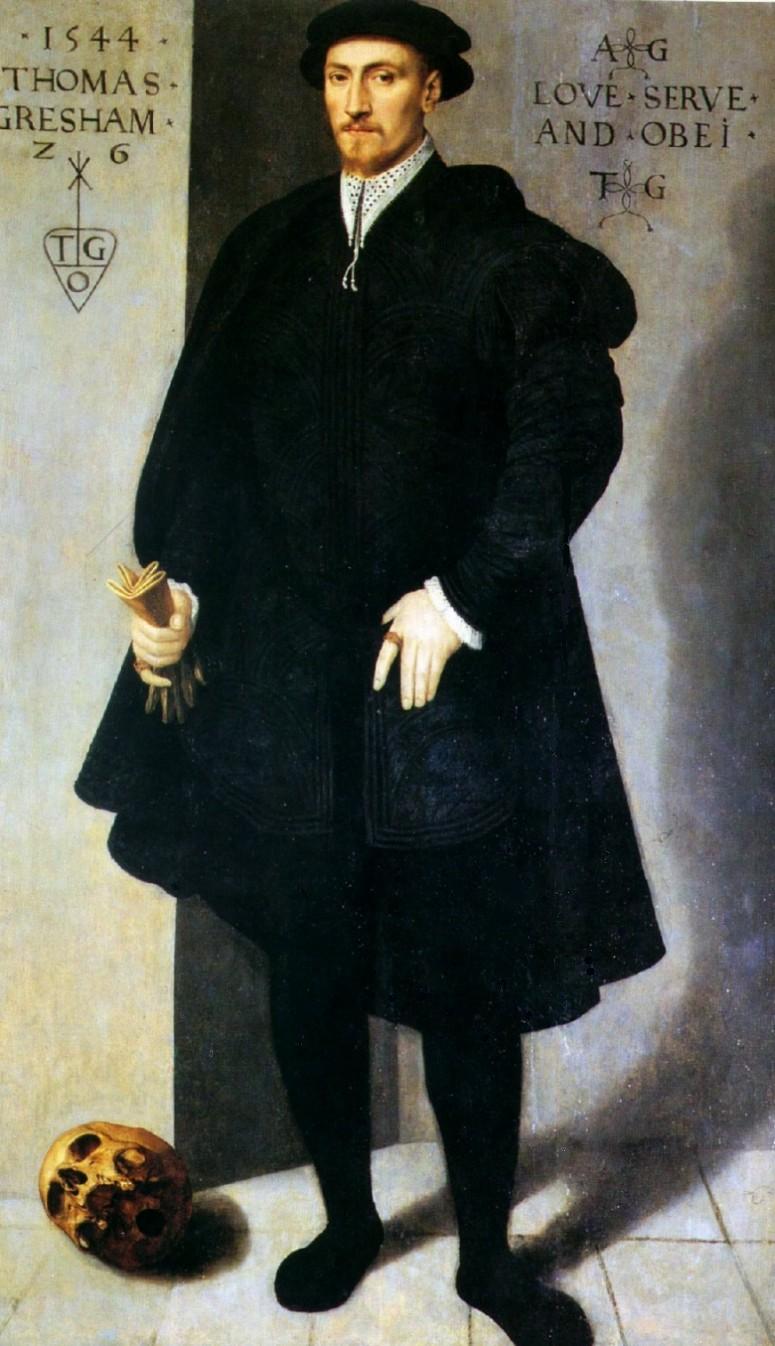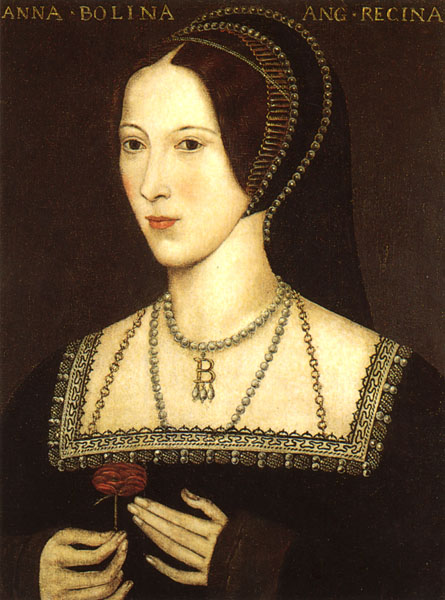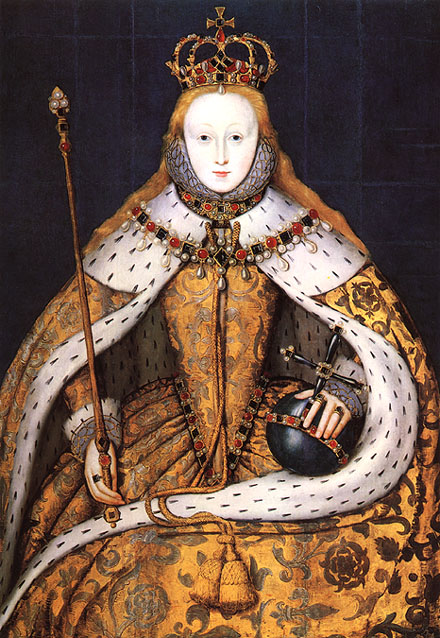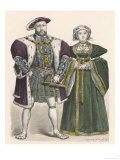Food, Clothes, People, Entertainment, Books/Films
Saturday, April 23, 2011
Apologies Everywhere
Tuesday, March 15, 2011
Ides of March
Interestingly enough, Julius Caesar (despite being the title of the play), is not the main character. In fact he only appears in three scenes and is killed in the beginning of the third act. The real central character of the play is Marcus Brutus, who was a great friend of Caesar but whom ultimately betrayed him.
Many of Shakespeare's historical plays correlate with some sort of Elizabethan sentiment or topic of the time. In this case it is a clear reflection of the anxiety within England over the succession of the crown since Elizabeth had refused to name a successor which had people worried that England might break out into Civil War similar to the one in Rome, after her death. The play was most likely premiered in 1599.
Thursday, March 10, 2011
She Was Fond of Nicknames
Elizabeth called Robert Dudley, Earl of Leicester her "Eyes"
William Cecil was her "Spirit"
Robert Cecil was her "pigmy" or "elf"
Sir Christopher Hatton was her "mutton" or "lids"
Francis Walsingham was her "Moor"
Francis, Duke of Alencon, (her French suiter) her "frog"
Tuesday, March 8, 2011
Elizabeth's Poems
Much suspected by me,
Nothing proved can be,
Quoth ELIZABETH prisoner.
The above couplet was written on the window in Elizabeth's jail/bedroom at Woodstock. She wrote on the window by engraving it with a diamond ring she was wearing. Elizabeth was questioned often about her feelings toward Mary, Catholicism, and whether Elizabeth had taken part in any of the plots against Mary. However, Elizabeth was always successful at indirectly answering questions and so Mary and her supporters were never able to find Elizabeth guilty of any wrongdoing. The one below was also written at Woodstock, but on a wall.
O FORTUNE! how thy restless wavering State
Hath fraught with Cares my troubled Wit!
Witness this present Prison whither Fate
Hath borne me, and the Joys I quit.
Thou causedest the Guilty to be loosed
From Bands, wherewith are Innocents inclosed;
Causing the Guiltless to be strait reserved,
And freeing those that Death had well deserved:
But by her Envy can be nothing wrought,
So God send to my Foes all they have thought.
ELIZABETH PRISONER.
A.D. M.D.LV.
Wednesday, March 2, 2011
An Elizabethan Courtier

Sir Thomas Gresham (1517/18–79) served as Elizabeth's chief financial adviser, negotiating loans on the Crown's behalf and advising Elizabeth on the necessity of recoinage.
A very successful businessman, Gresham paid for the establishment of an exchange in London, the precursor to the London Stock Exchange, which was completed in 1569. After Elizabeth visited 1571 it became known as the Royal Exchange.
The Exchange was very successful with merchants from England and Europe. It provided a valuable symbol of the nation's increasing wealth as well as of its changing status from an 'island nation' isolated from power to one that was a seat of power and commerce, independent of the problems in continental Europe.
Gresham died suddenly, apparently of apoplexy, on 21 November 1579. His only son had predeceased him.
Saturday, February 19, 2011
Going on Progress
 aying with private and civic hosts, and at the universities of Oxford and Cambridge. The progresses provided hosts with unique opportunities to impress and influence the Queen, and became occasions for magnificent and ingenious entertainments and pageants, drawing on the skills of architects, artists, and craftsmen, as well as dramatic performances, formal orations, poetic recitations, parades, masques, dances, and bear baiting.
aying with private and civic hosts, and at the universities of Oxford and Cambridge. The progresses provided hosts with unique opportunities to impress and influence the Queen, and became occasions for magnificent and ingenious entertainments and pageants, drawing on the skills of architects, artists, and craftsmen, as well as dramatic performances, formal orations, poetic recitations, parades, masques, dances, and bear baiting. Monday, February 14, 2011
Walter Raleigh Myth
 As the myth goes, the explorer (and sometimes pirate) Sir Walter Raleigh once stepped forth from a crowd, gallantly doffed his cloak, and threw it over a mud puddle to protect the feet of the passing queen. This is unfortunately pure fiction, and Sir Walter Scott repeats this old legend in his famous novel "Kenilworth"
As the myth goes, the explorer (and sometimes pirate) Sir Walter Raleigh once stepped forth from a crowd, gallantly doffed his cloak, and threw it over a mud puddle to protect the feet of the passing queen. This is unfortunately pure fiction, and Sir Walter Scott repeats this old legend in his famous novel "Kenilworth"
Captain Raleigh found the queen walking , till, meeting with a plashy place, she seemed to scruple going thereon. Presently Raleigh cast and spread his new plush cloak on the ground; whereon the queen trod gently, rewarding him afterwards with many suits.
- Thomas Fuller's 'Worthies'.
Thursday, February 3, 2011
Portrait Crisis

At the very first glance, one can tell the portaits on the left and on the right are vastly different in color, attire, and symbolism. The portrait on the right is Elizabeth "in blacke with a hoode and cornet", titled the Clopton Portrait, (c. 1558-60). The portrait on the right is called The Hampden Portrait, by Van Der Meulen, (1560s). Apparently, the The Hampden Portrait was produced in response to a crisis over the production of the royal image, one which was reflected in the words of a draft proclamation dated 1563. The draft proclamation (though never published) was a response to the circulation of poorly-made portraits in whic
 h Elizabeth is shown "in blacke with a hoode and cornet", a style she no longer wore. The Hampden Portrait is also a full length portrait, which highlights the seriousness of the matter, since it is clear that the painter and Elizabeth's people were trying to emphasize that Elizabeth was no longer wearing the 'hoode and cornet.' The symbolism of the Clopton Portrait shows Elizabeth holding a book (possibly a prayer book) suggesting either studiousness or piety. In the The Hampden Portrait, Elizabeth wears a red rose on her shoulder, a symbol of the Tudor dynasty and of maidenly chastity, and holds a gillyflower in her hand. From these two portraits we can see that Elizabeth is in a transition from a recognisable human to a goddess, as she is for the most part unadorned in symbolism.
h Elizabeth is shown "in blacke with a hoode and cornet", a style she no longer wore. The Hampden Portrait is also a full length portrait, which highlights the seriousness of the matter, since it is clear that the painter and Elizabeth's people were trying to emphasize that Elizabeth was no longer wearing the 'hoode and cornet.' The symbolism of the Clopton Portrait shows Elizabeth holding a book (possibly a prayer book) suggesting either studiousness or piety. In the The Hampden Portrait, Elizabeth wears a red rose on her shoulder, a symbol of the Tudor dynasty and of maidenly chastity, and holds a gillyflower in her hand. From these two portraits we can see that Elizabeth is in a transition from a recognisable human to a goddess, as she is for the most part unadorned in symbolism.
Tuesday, February 1, 2011
Let's Talk About Snoods
 During the Elizabethan age they went through a period of creativity in which women wore snoods adorned with beads, pears and other jewels matching with their dress-up. They also served a practical purpose for the women with long hair who went horseback riding, or for the average Subject who saving their hair from the possibilities of getting captured while working [on the farm].
During the Elizabethan age they went through a period of creativity in which women wore snoods adorned with beads, pears and other jewels matching with their dress-up. They also served a practical purpose for the women with long hair who went horseback riding, or for the average Subject who saving their hair from the possibilities of getting captured while working [on the farm].Snoods can still be seen today, albeit rarely, but using a sheer/fishnet snood can be very pretty especially for formal occassions if you use the delicate silk type or if you go Elizabethan and wear one with pearls and jewels adorned.
Tuesday, January 25, 2011
Happy Anniversary *cough cough*
 In 1533 on January 25th, Henry VIII and Anne Boleyn secretly wed in London. Anne was the daughter of Thomas Boleyn, later Earl of Wiltshire and Earl of Ormond, and his wife, Lady Elizabeth Howard. As was customary for young women of Noble birth, they would attend a foreign court as a Lady-in-Waiting or Maid of Honour to another Noble woman (typically one of a higher station than the young lady) as a sort of finishing school. Anne completed her education in the Netherlands, and then spent some time as a maid of honour to Queen Mary, and then to 15-year-old Queen Claude of France, with whom she stayed nearly seven years. In the Queen's household, she completed her study of French and developed interests in fashion and religious philosophy. She also acquired knowledge of French culture and etiquette.
In 1533 on January 25th, Henry VIII and Anne Boleyn secretly wed in London. Anne was the daughter of Thomas Boleyn, later Earl of Wiltshire and Earl of Ormond, and his wife, Lady Elizabeth Howard. As was customary for young women of Noble birth, they would attend a foreign court as a Lady-in-Waiting or Maid of Honour to another Noble woman (typically one of a higher station than the young lady) as a sort of finishing school. Anne completed her education in the Netherlands, and then spent some time as a maid of honour to Queen Mary, and then to 15-year-old Queen Claude of France, with whom she stayed nearly seven years. In the Queen's household, she completed her study of French and developed interests in fashion and religious philosophy. She also acquired knowledge of French culture and etiquette. ompeting for her.
ompeting for her.
Saturday, January 15, 2011
Coronation Day
 tinue throughout her reign.
tinue throughout her reign.The first pageant laid out Elizabeth's genealogy, stressing her 'Englishness' (as opposed to the 'Spanishness' of Mary, who was half Spanish, and Philip, who was Spanish), and her descent from Henry VII and Elizabeth of York, whose marriage had put an end to years of civil war. The pageant made clear the implication that the granddaughter of those who ended the War of Roses would herself reunify England and bring peace to it. The second pageant showed Elizabeth's government characterized by the four virtues of True Religion, Love of Subjects, Wisdom and Justice trampling their opposite vices, including Superstition and Ignorance. During the third pageant the Lord Mayor presented Elizabeth with a gift of gold, symbolically demonstrating the interdependence of the City and the Crown.
In the fourth pageant, a decaying commonwealth (Mary's) was contrasted with a thriving one (Elizabeth's). It featured the figure of Truth, who was carrying a Bible written in English and entitled the Word of Truth. Truth presented the Bible to the Queen, who kissed it and laid it on her breast to the cheers of the crowd. The task ahead of her was presented in the final pageant, with Elizabeth portrayed as Deborah, the Old Testament prophet, who rescued the House of Israel and then went on to rule for 40 years.
The actual coronation took place the following day, Sunday 15 January 1559, in Westminster Abbey. Elizabeth and her court walked in procession to Westminster Abbey on a purple carpet which disappeared once she passed by. (Crowds cut off parts of the carpet as souvenirs.) Church bells rang upon her arrival at the Abbey.
The ritual itself was a clever compromise between the Catholic practices that existed and the Protestant ones that she intended to introduce. She was crowned in Latin by a Catholic bishop but parts of the service that followed were read twice – in Latin and English. The changes in the service were a portent of the religious settlement to come and symbolic of her 'make-haste-slowly' approach to introducing change. Elizabeth also complained the special anointing oil was “grease and smelled ill”
She emerged from the ceremony to greet her adoring fans wearing a big smile, her crown and carrying the orb and sceptre of her new office.The crowds greeted their Queen enthusiastically, as music played and church bells rang.
Elizabeth changed into a violet velvet dress for her coronation banquet in Westminster Hall. The Queen’s Champion, Sir Edward Dymoke, rode into the Hall, fully armed, to throw down the gauntlet and challenge anyone who disputed Elizabeth’s claim to the throne.The celebrations at court continued for another ten days.

(Elizabeth's Coronation Procession)
Thursday, January 6, 2011
Today in History

 death of Henry's third wife, Jane Seymour.
death of Henry's third wife, Jane Seymour.Henry was frustrated, and he took out his feelings on Anne. He was described as trying repeatedly to upset her by sending away her personal ladies-in-waiting from Cleves and replacing them with Englishwomen instead. However, Anne made friends quickly and soon enjoyed the lively company of the English maids of honor who attended her. Henry also ordered that she put aside her traditional and cumbersome Germanic clothing and adopt more streamlined English styles. She liked this idea and immediately ordered a large, lavish wardrobe, straining Henry's finances. He commanded that she speak only English and arranged for her to be tutored intensively. She learned English with amazing speed, so much so that the king was reportedly shocked.
Anne adamantly desired to stay in England after her annulment. She thus fully cooperated with Henry, supporting his claims, and probably testified that her marriage had never been consummated, as well as that her previous betrothal to the son of the Duke of Lorraine had never been legally broken. She gratefully accepted Henry's offer of several houses, a princely income, and the honorary title of "the King's Beloved Sister." The former queen receive d a generous settlement, including Richmond Palace, and Hever Castle (see right), home of Henry's former in-laws, the Boleyns. Anne of Cleves House, in Lewes, Sussex, is just one of many properties she owned but she never lived there. Henry and Anne became good friends—she was an honorary member of the King's family and was referred to as "the King's Beloved Sister". She was invited to court often and, out of gratitude for her not contesting the annulment, Henry decreed that she would be given precedence over all women in England save his own wife and daughters.
d a generous settlement, including Richmond Palace, and Hever Castle (see right), home of Henry's former in-laws, the Boleyns. Anne of Cleves House, in Lewes, Sussex, is just one of many properties she owned but she never lived there. Henry and Anne became good friends—she was an honorary member of the King's family and was referred to as "the King's Beloved Sister". She was invited to court often and, out of gratitude for her not contesting the annulment, Henry decreed that she would be given precedence over all women in England save his own wife and daughters.
The was one matter, however, on which she insisted. Anne consented to the annulment only after the king allowed her to have access to the royal children. She had formed strong attachments to all three of them, particularly Elizabeth. As she could never remarry and was thus denied the chance to have children of her own, Henry agreed. As a tribute to her prudence and good sense, even allowed Prince Edward, the royal heir, to visit her on occasion.
In 1553, when Henry's daughters Mary and Elizabeth rode into London with Mary as the new monarch, Anne was there to greet them. She was also present at Mary I's coronation at Westminster. That was her last public appearance. As the new Queen was a strict Catholic, Anne yet again converted her religion, now to becoming a Roman Catholic.
Of all of Henry's wives, Anne of Cleaves was probably the most fortunate. Though a failure as a wife, she earned the king's respect and affection, and was able to live out her life in relative happiness. Anne died at age 41 on July 16th, 1557 and is the only wife of Henry's to be buried at Westminster Abbey.
Wednesday, January 5, 2011
Twelfth Night

 o received the slices containing them should be designated king and queen of the night's festivities.
o received the slices containing them should be designated king and queen of the night's festivities.Shakespeare's play Twelfth Night, or What You Will was written to be performed as a Twelfth Night entertainment. The earliest known performance took place at Middle Temple Hall, one of the Inns of Court , on Candlemass night, 2 February 1602. The play has many elements that are reversed, in the tradition of Twelfth Night, such as a woman Viola dressing as a man, and a servant Malvolio imagining that he can become a nobleman.
Mad as a Hatter

–noun
1. a scene or state of wild uproar and confusion.
2. Archaic. an insane asylum or madhouse.
As a means of generating more funding, you could pay a penny and view the "lunatics." Crowds peered through iron bars hoping to get a glimpse of the patients unusal looks and behavior, especially if their antics included anything of a sexual nature or violence. They were even allowed sticks to prod the poor patients. Asylum conditions were improving but they still had a long way to go. It was a Royal hospital, but controlled by the City of London after 1557, and managed by the Governors of Bridewell.
Saturday, January 1, 2011
Happy New Year

Among ordinary folk, gifts may include oranges, a bunch of rosemary, brooches, marzipan, and wine.
Prosperous citizens may send gifts of fowl or rabbits to the mayor, who will provide a feast in return. In one account, the earl of Northumberland was awakened on New Year's morning by minstrels, followed by a fanfare of trumpets. He received his gifts, and then gave gifts to his household. He held a feast at noon, processing into the Hall in great state. He then watched a play followed by a bergomask, interspersed with pageants.

